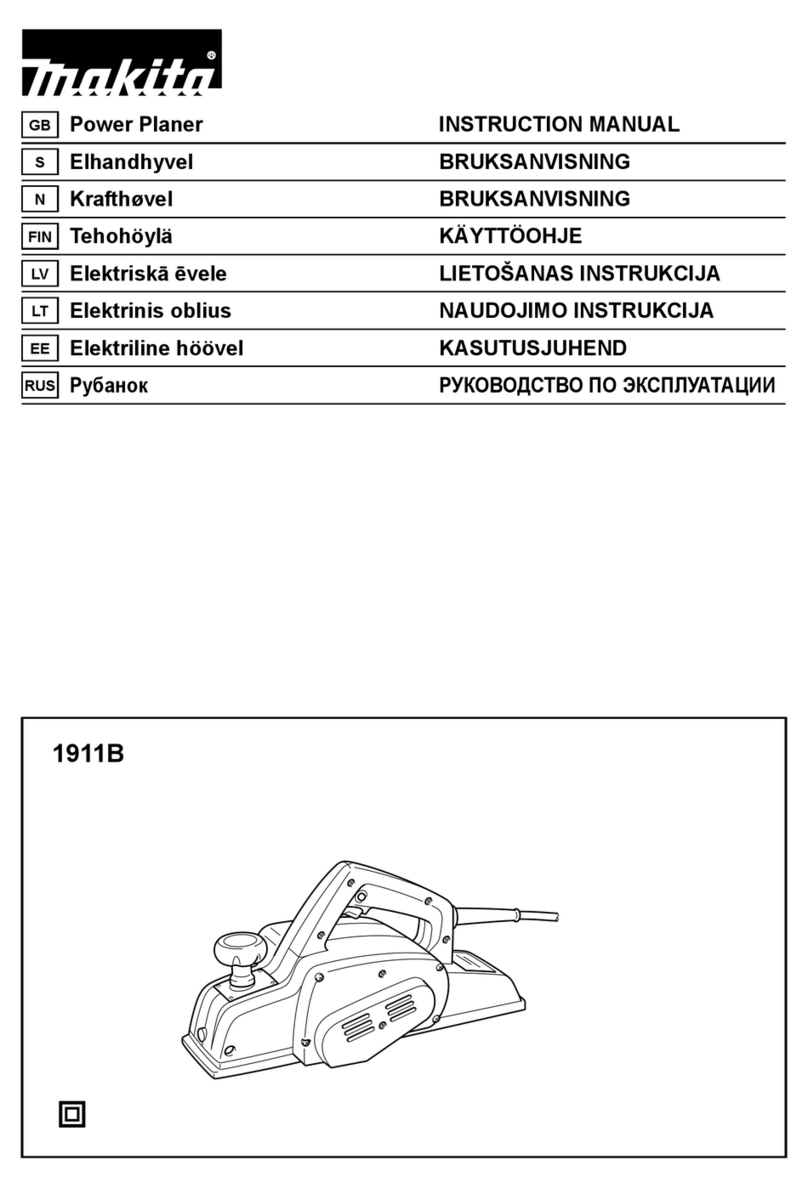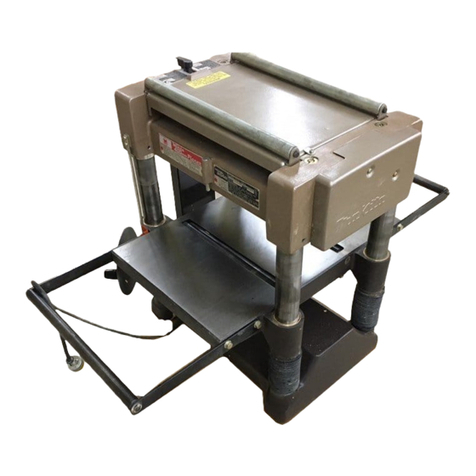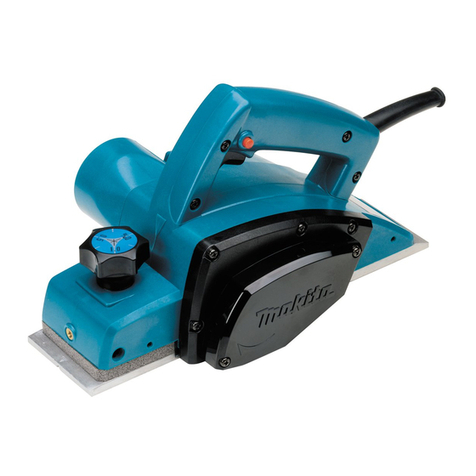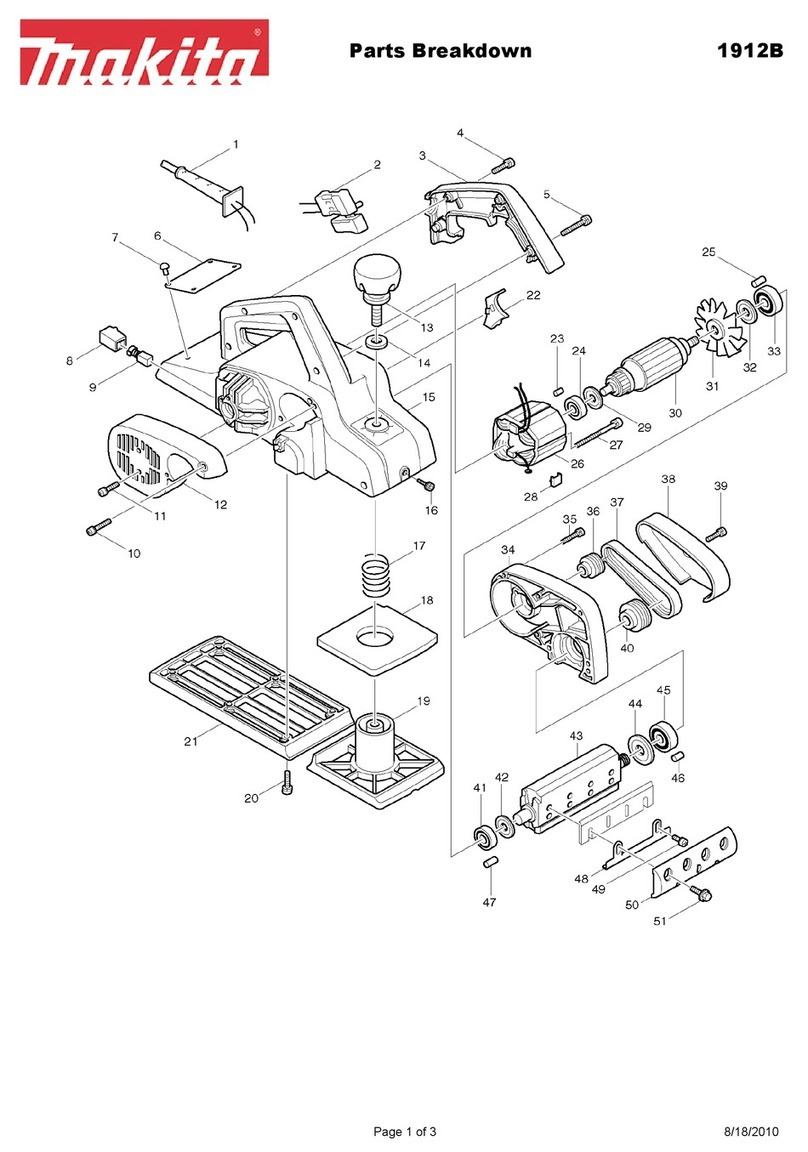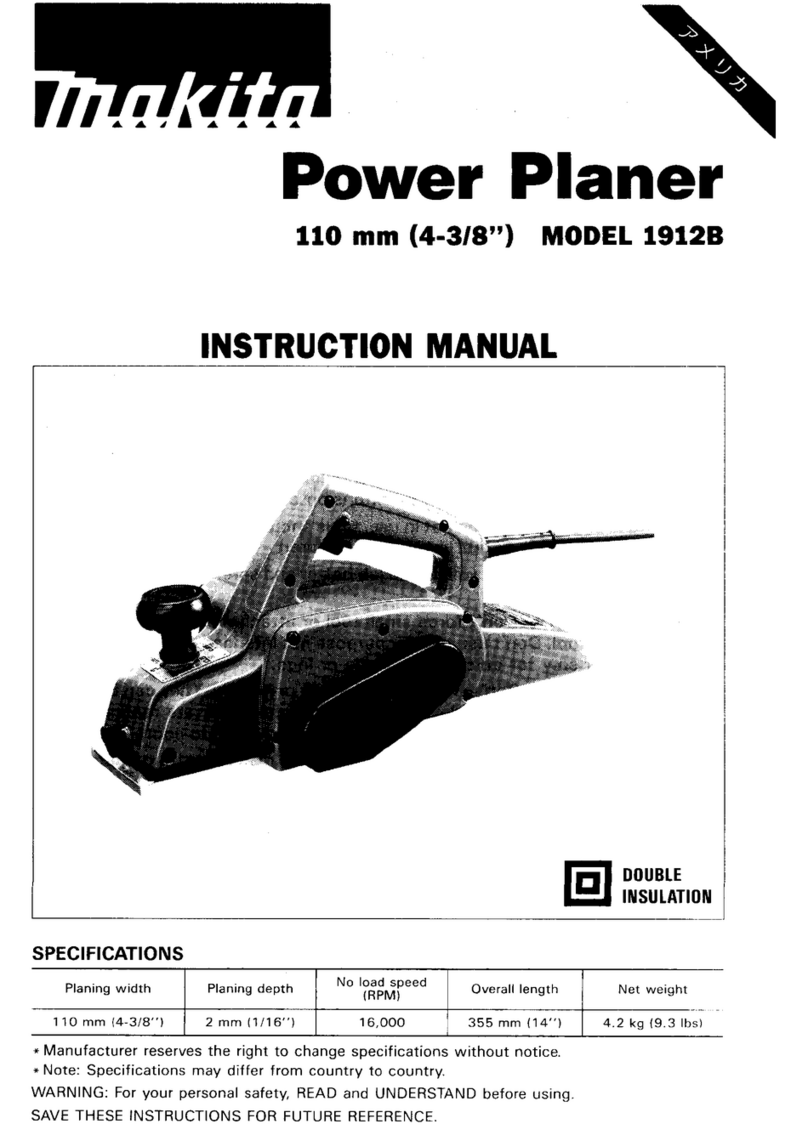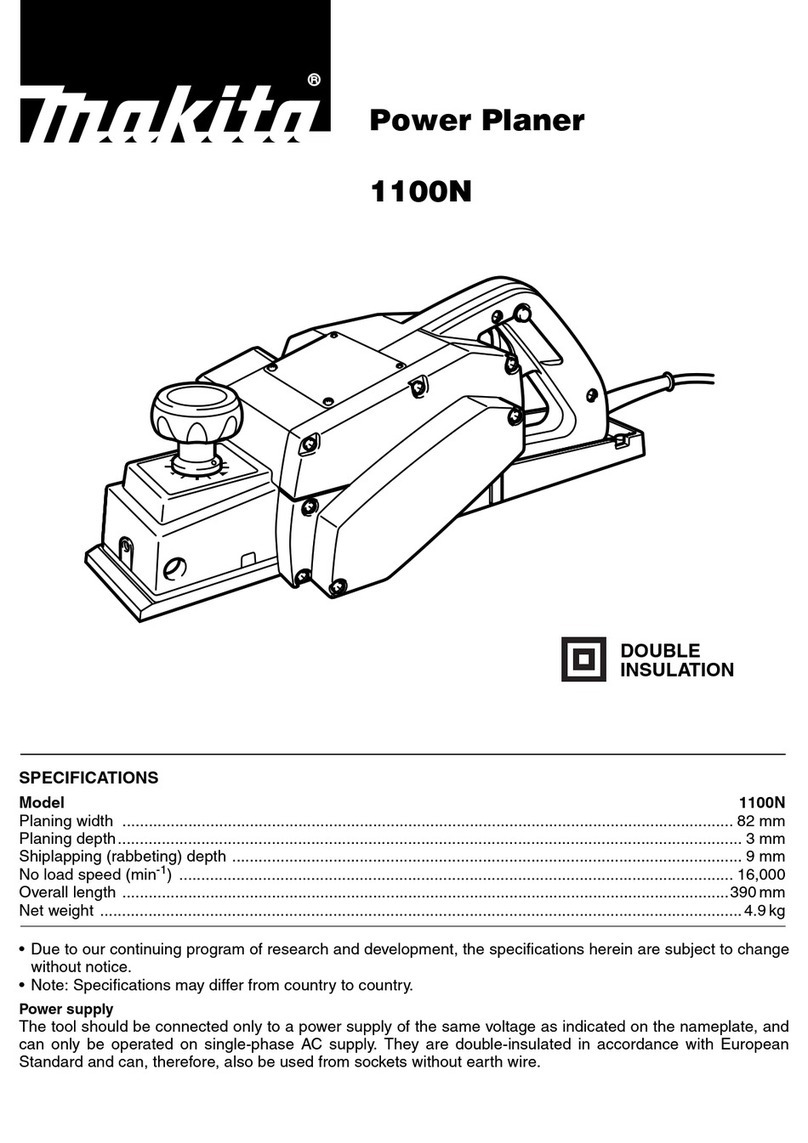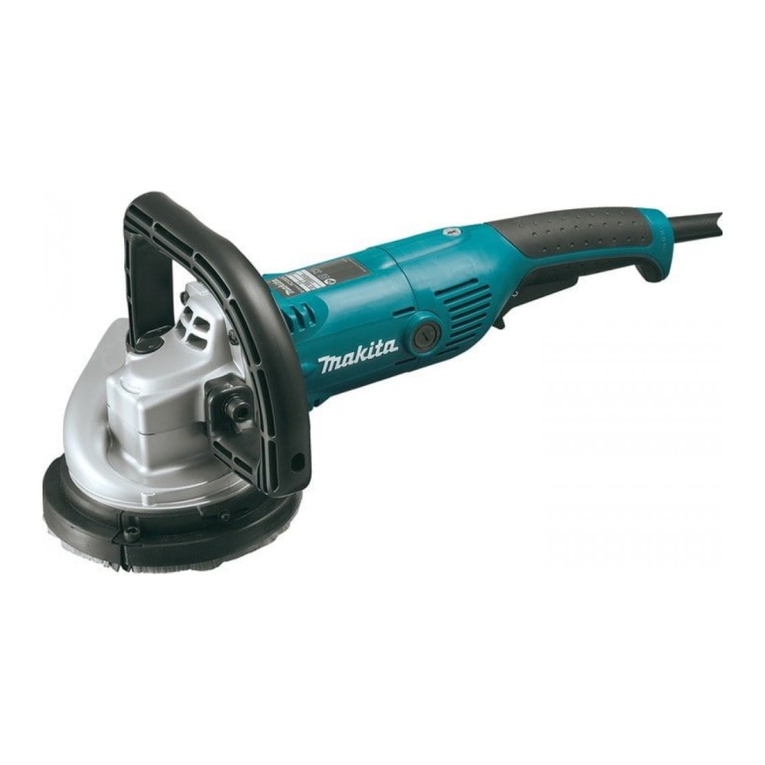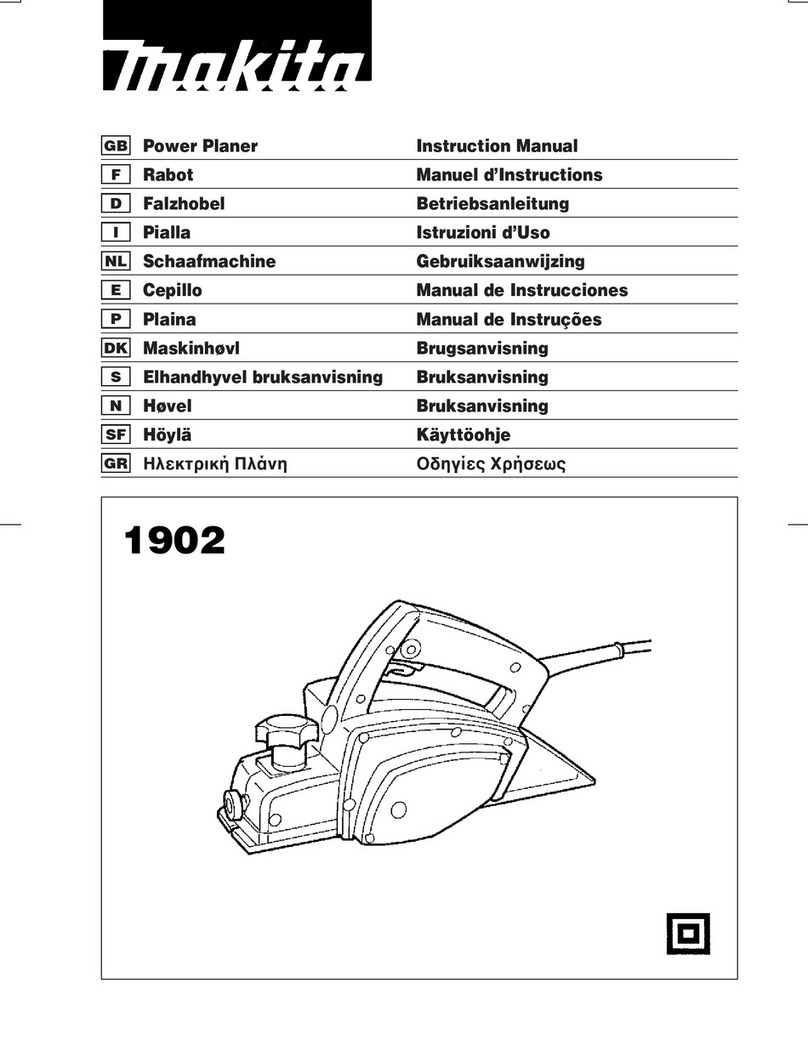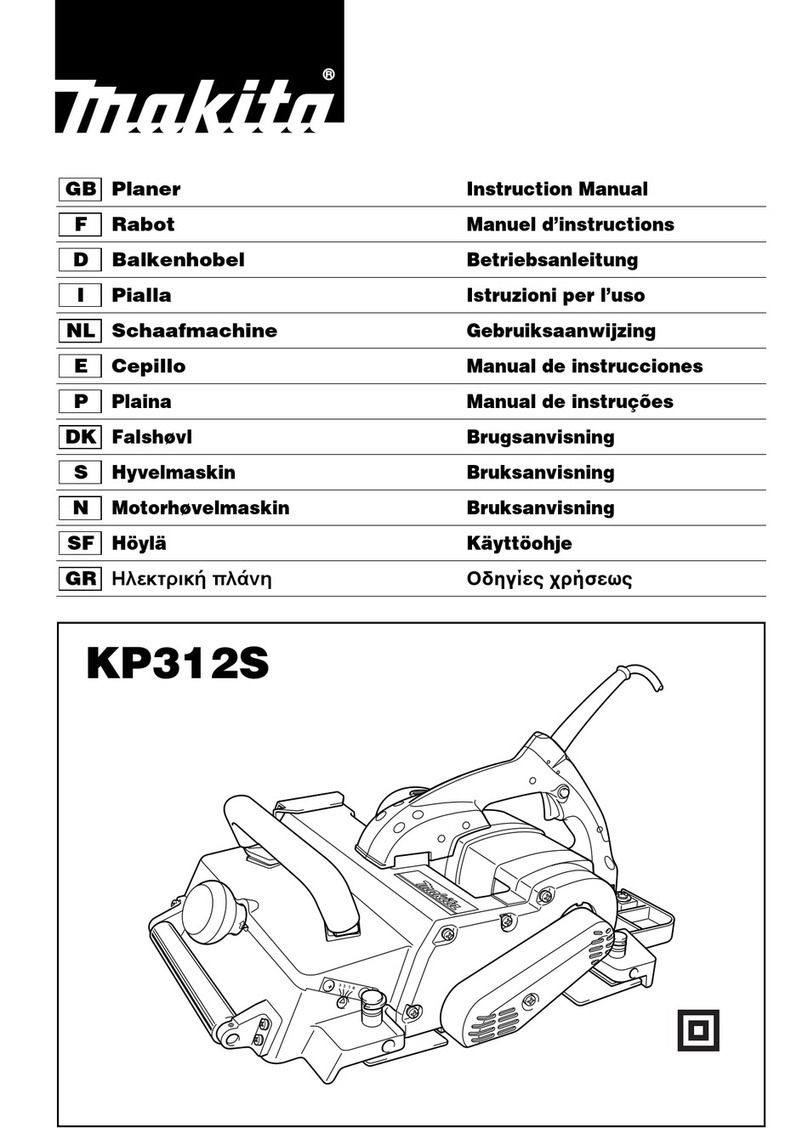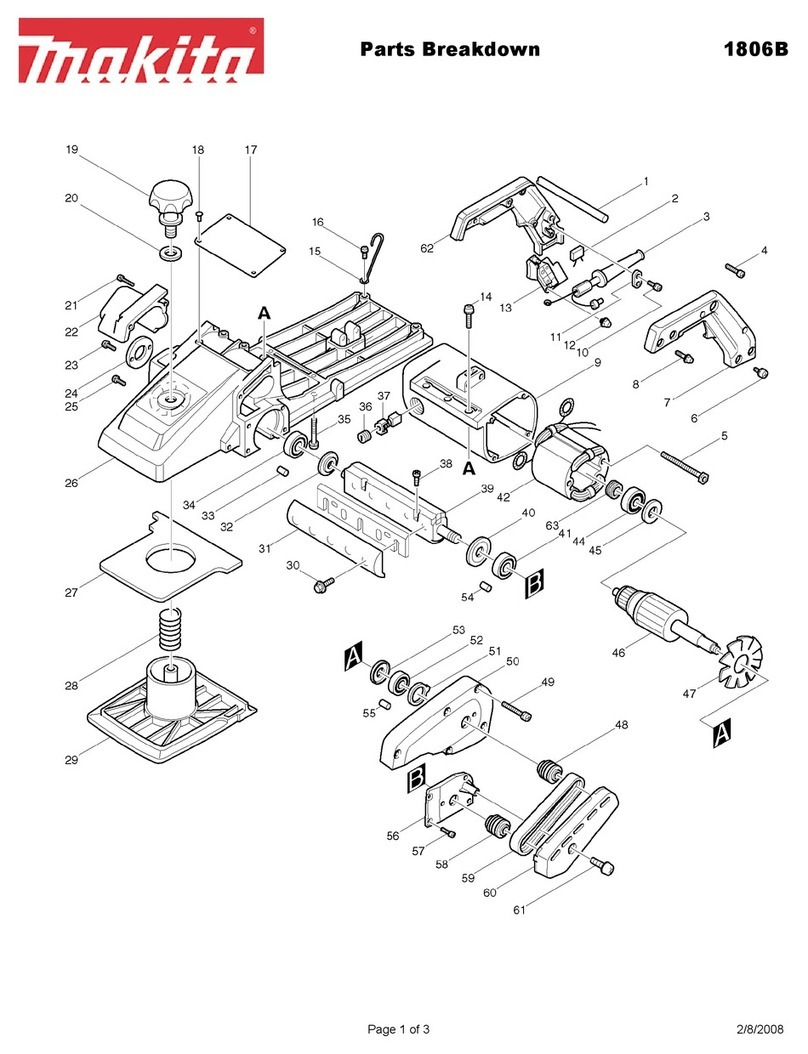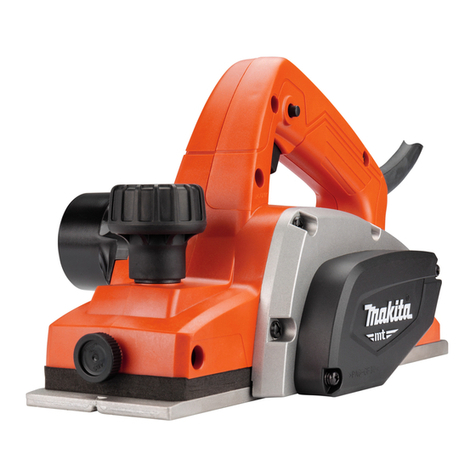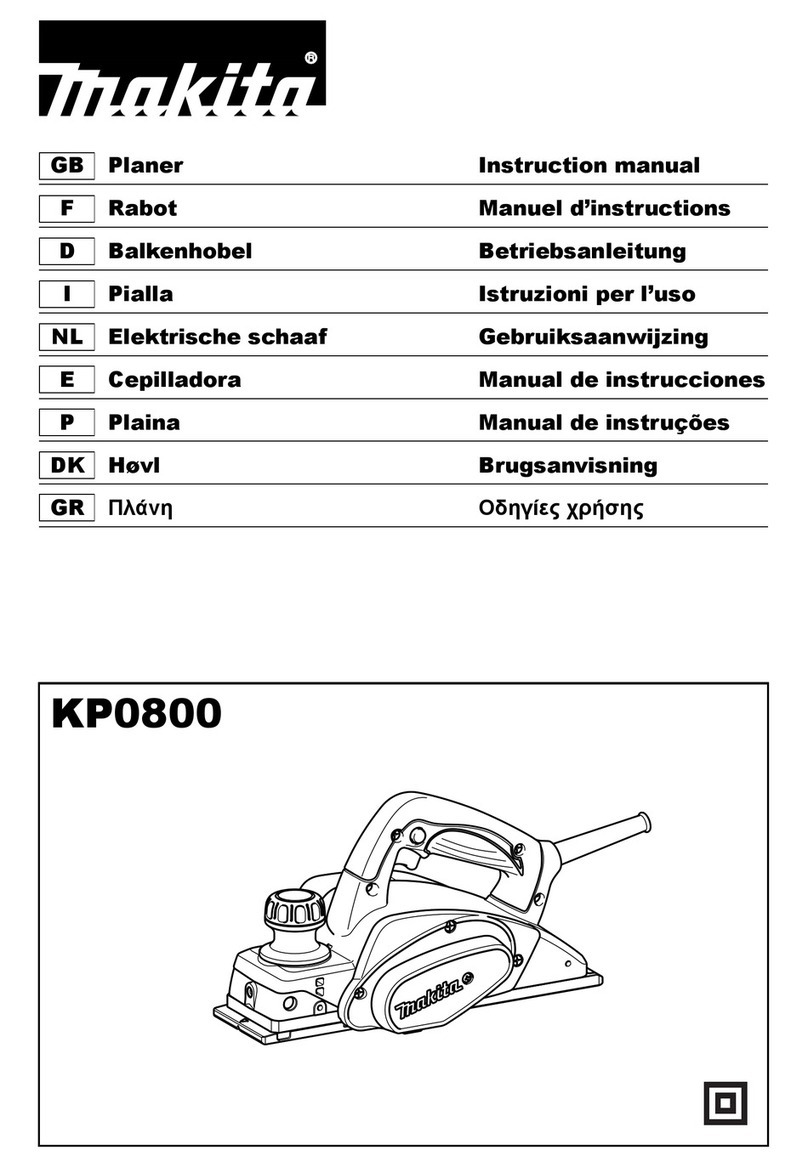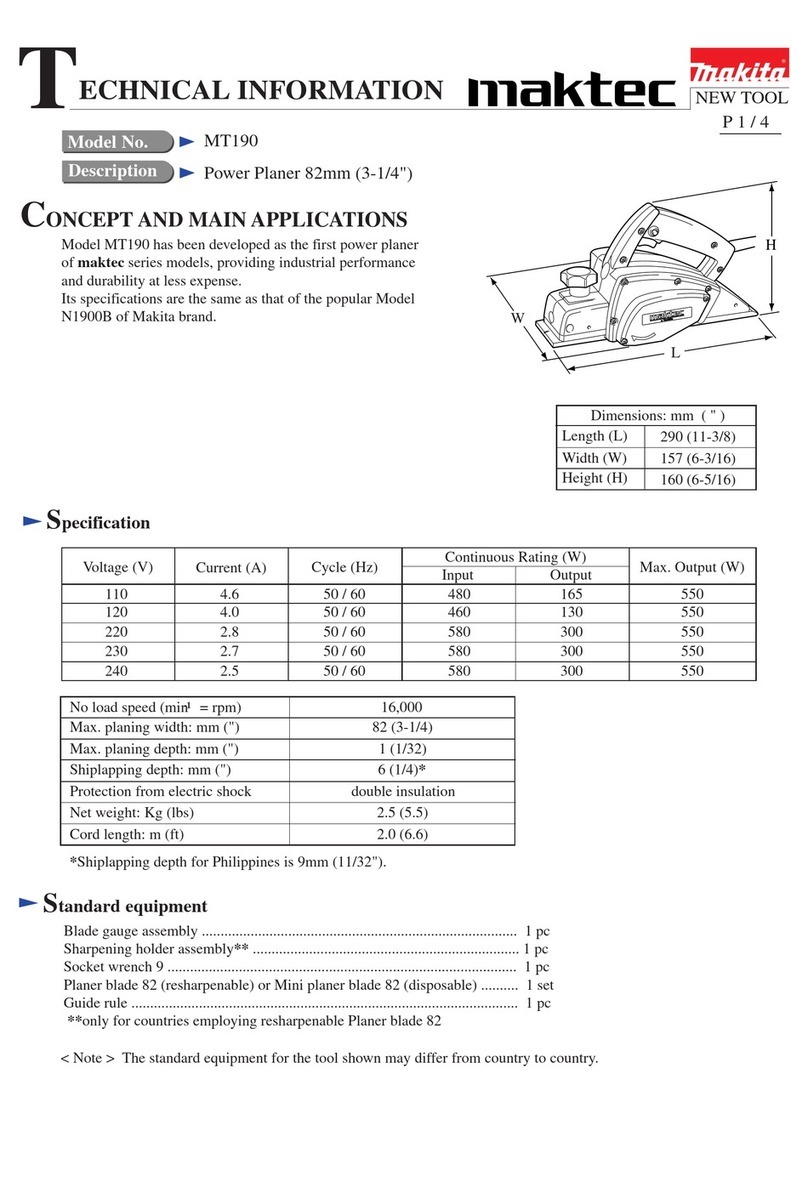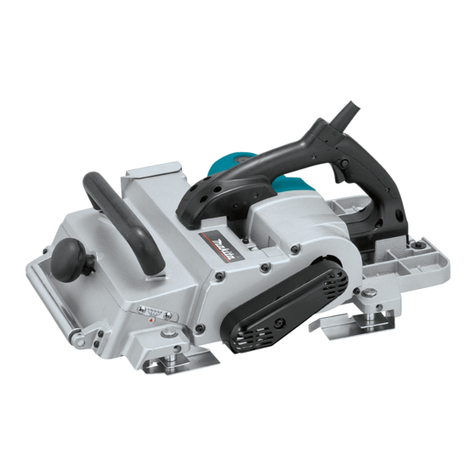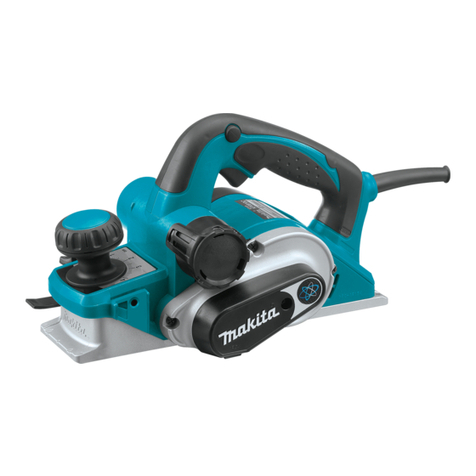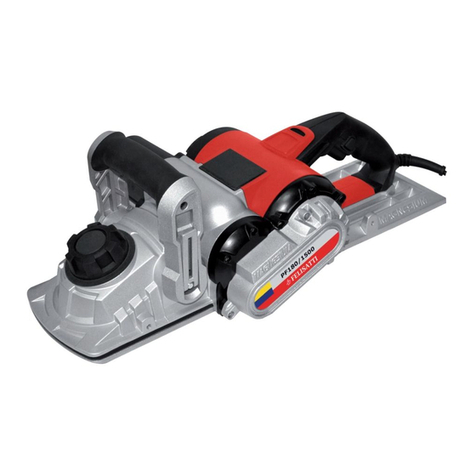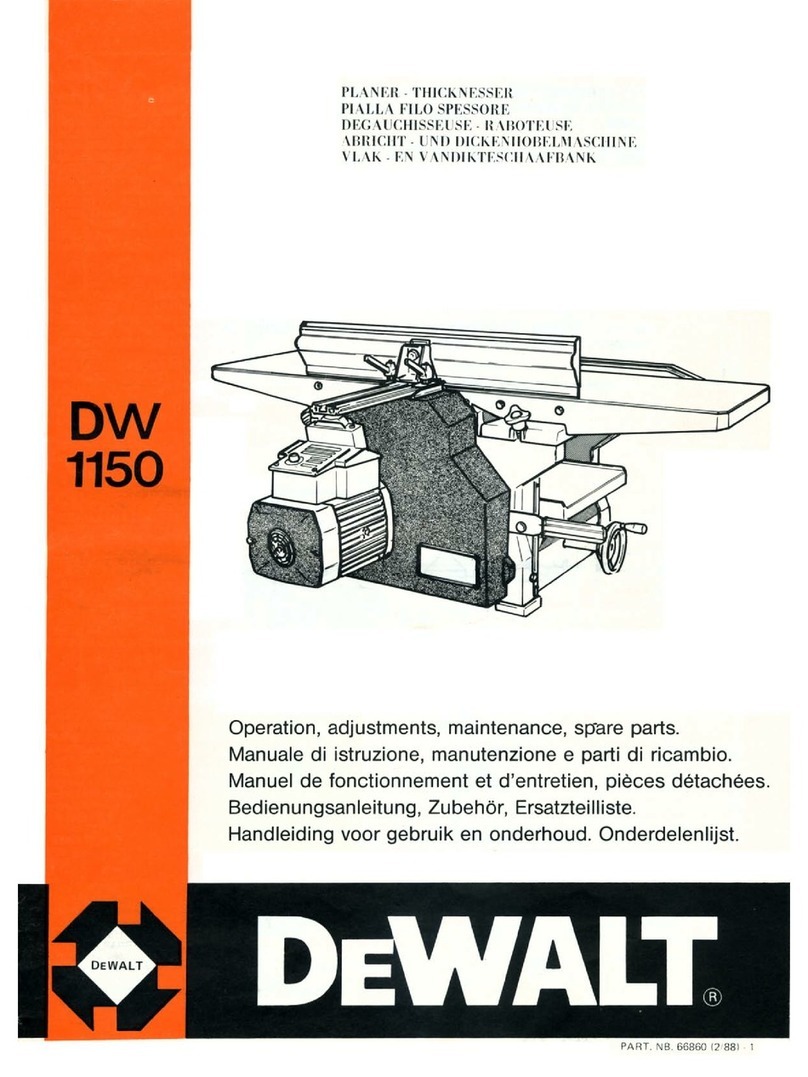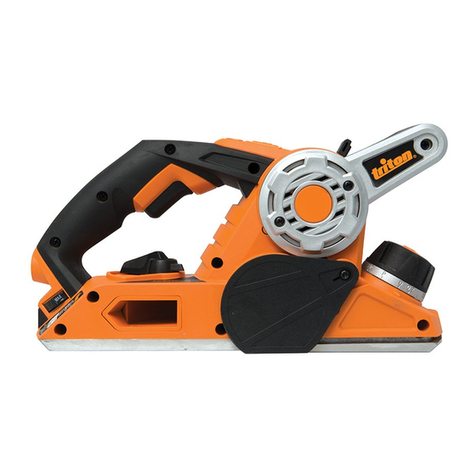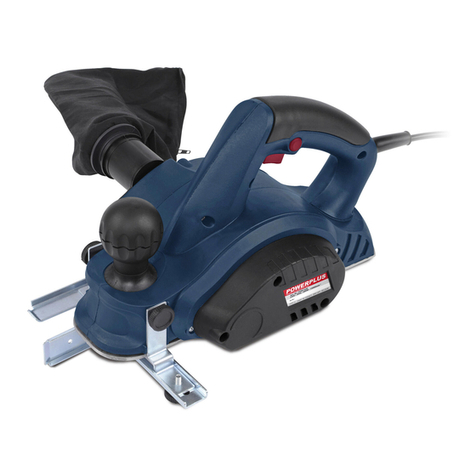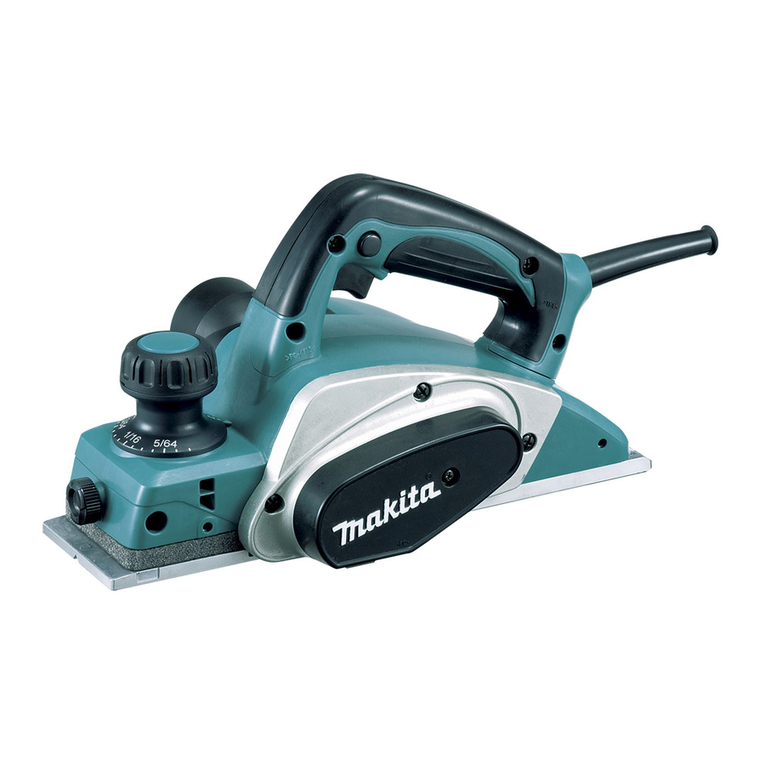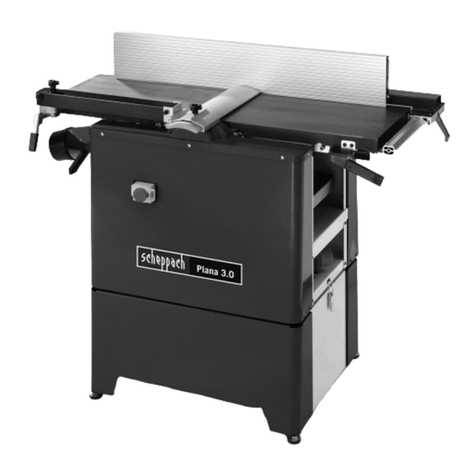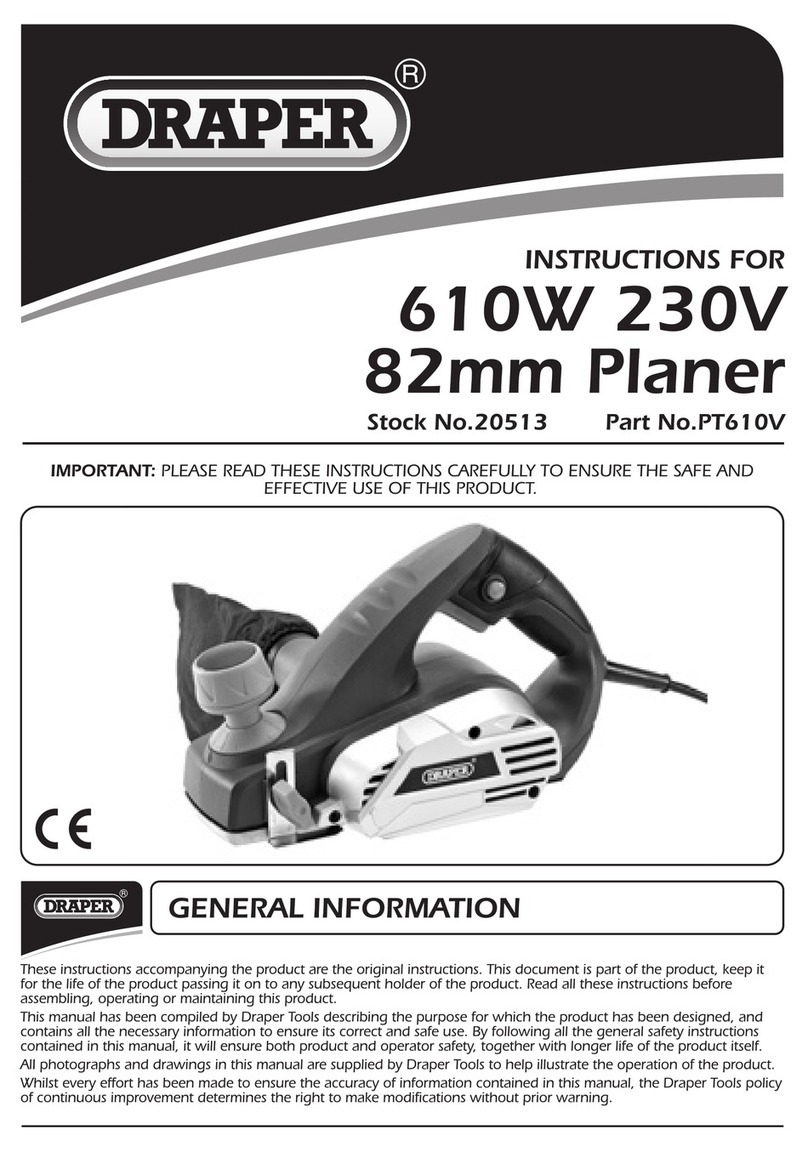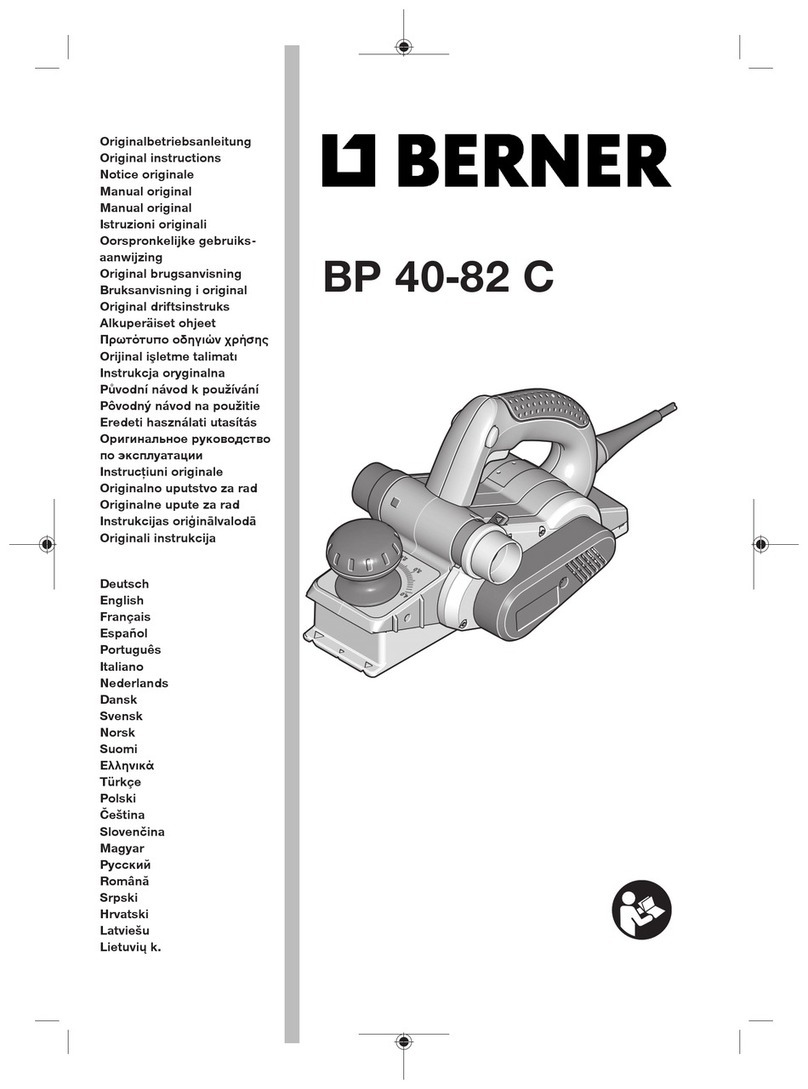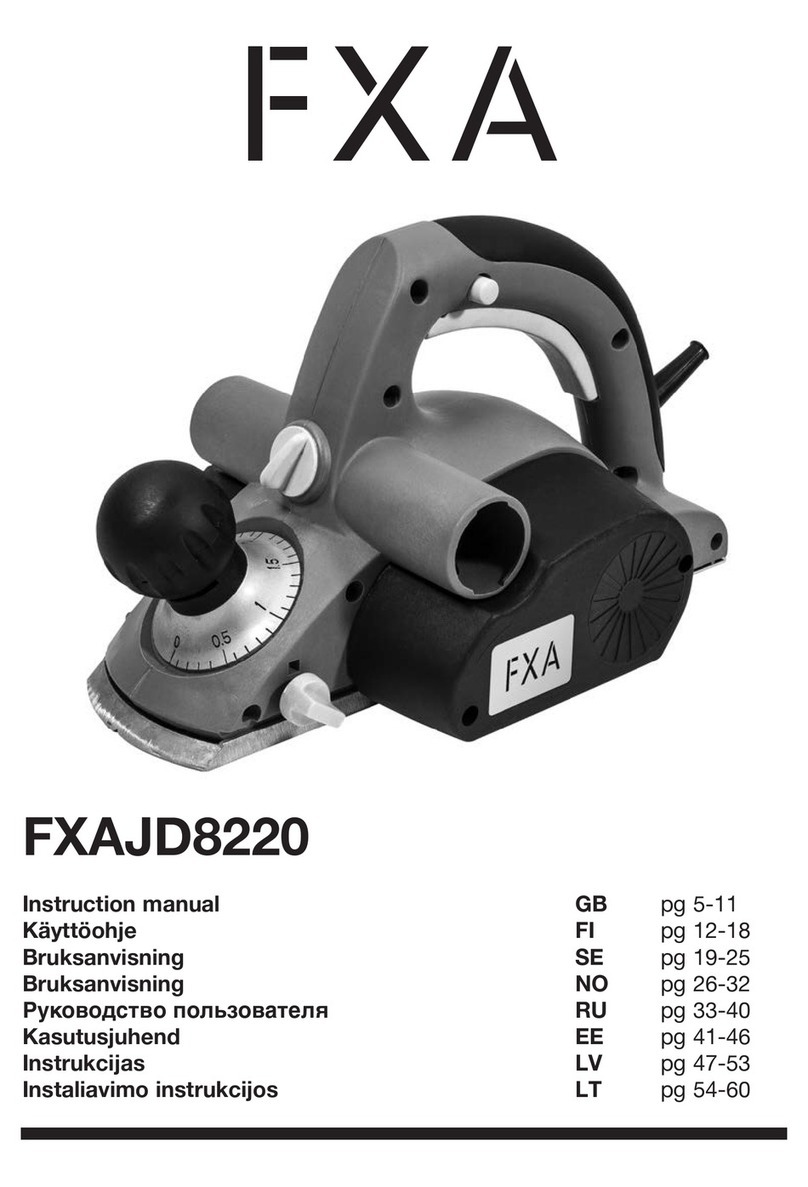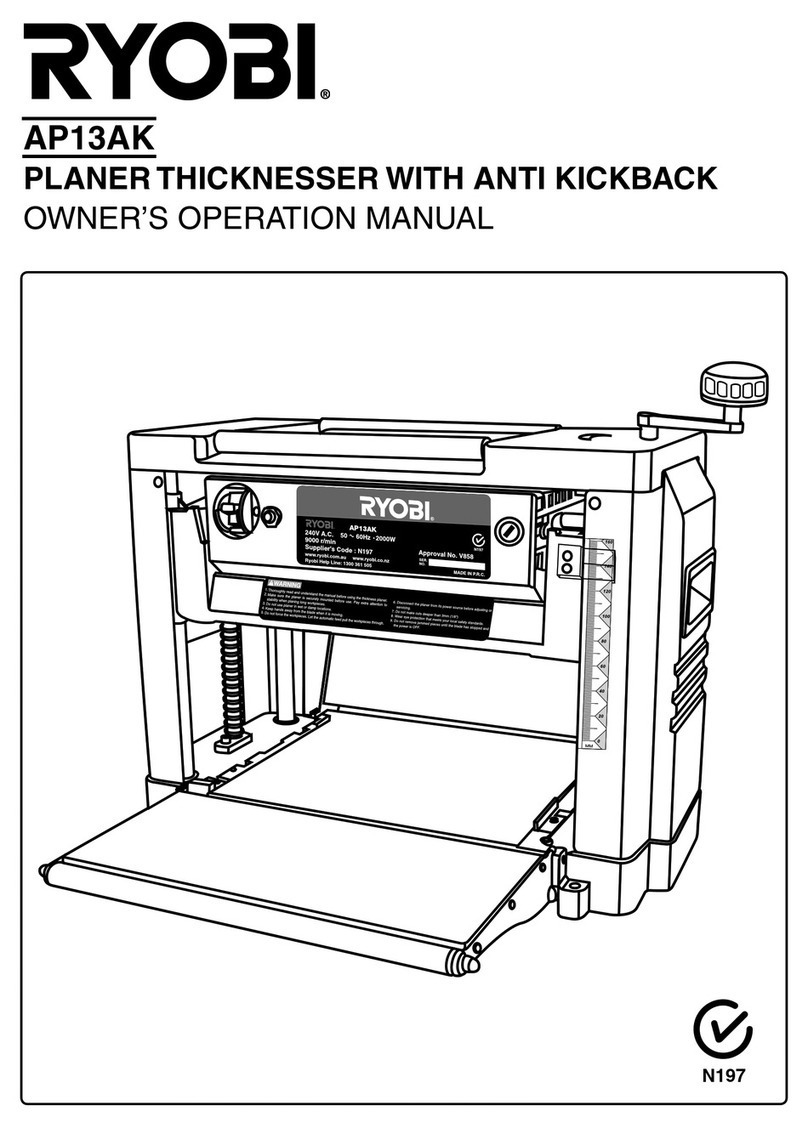7
INSTALLATION
Movement and transport of thicknesser (Fig. 1)
CAUTION:
• Watch your step when moving the tool.
Fold the sub-tables. Grasp the carrying handles when
moving the tool.
When transporting it by vehicle, secure with a rope or
other substantial means to prevent tipping or movement.
Positioning the thicknesser (Fig. 2)
Locate the tool in a well lit and level place where you can
maintain good footing and balance. Bolt/screw it to the
workbench or thicknesser stand (optional accessory)
using the bolt holes provided in the base.
FUNCTIONAL DESCRIPTION
CAUTION:
• Always be sure that the tool is switched off and unplugged
before adjusting or checking function on the tool.
Switch action (Fig. 3)
CAUTION:
• Before plugging in the tool, always be sure that the tool
is switched off. The pilot lamp lights up when the tool is
plugged into the power source.
To start the tool, press the ON (I) button. To stop it, press
the OFF (O) button.
Dimensional adjustment (Fig. 4)
Lower the main frame by turning the crank handle coun-
terclockwise until the indicator plate points to the scale
graduation indicating the desired finished dimension.
One full turn of the crank handle moves the main frame
2 mm up or down. The scale has inch graduations on its
right side and metric graduations on its left side.
Adjusting depth of cut
The maximum depth of cut differs depending upon the
width of workpiece being cut. Refer to the table. When
you need to remove more than the amount specified in
the table, set the depth of cut shallower than the amount
and make two or more passes.
To adjust the depth of cut, proceed as follows.
Insert the workpiece flat on the table top. Lower the main
frame by turning the crank handle counterclockwise. The
depth gauge will rise and the amount of gauge rise indi-
cates the depth of cut. (Fig. 5)
CAUTION:
• Always lower the main frame when aligning the indica-
tor plate with the graduation indicating the desired fin-
ished dimension. If you raise the main frame into the
desired finished dimension, additional play in the screw
may result. This may cause an undesired finished
dimension.
• Always place the workpiece flat on the table top when
predetermining the depth of cut. Otherwise, the prede-
termined depth of cut will differ from actual depth of cut.
Depth adjusting gauge (Fig. 6)
Use the depth adjusting gauge when you need to prede-
termine the depth of cut more accurately. To do so, pro-
ceed as follows.
First, plane the workpiece at the predetermined depth of
cut. Measure the thickness of the planed piece to know
how much more stock you need to remove.
Turn the depth adjusting gauge on the crank handle until
the 0 graduation is aligned with the groove on the tool.
Now turn the crank handle counterclockwise until the
graduation for the desired depth of cut is aligned with the
groove on the tool.
When you need to remove more than the amount speci-
fied in the table mentioned in the “Adjusting depth of cut”
section, set the depth of cut shallower than the amount
and make two or more passes.
Stopper (Fig. 7)
Use the stopper when you need to plane many work-
pieces to the same thickness. To do so, proceed as fol-
lows.
Turn the crank handle until the indicator plate points to
the scale graduation indicating the desired finished
dimension.
Depress the stopper button and lower the stopper until it
just contacts the table top.
If you need fine adjustment of the stopper, turn the stop-
per knob.
CAUTION:
• When the stopper is not in use, always raise it to the
topmost position. Never force the crank handle when
the stopper is in contact with the table top. This may
cause tool damage.
ASSEMBLY
CAUTION:
• Always be sure that the tool is switched off and
unplugged before carrying out any work on the tool.
Replacing blades
CAUTION:
• Handle the blades very carefully when removing or
installing the blades to prevent cuts or injury from the
blades and to prevent damage to the blades. They are
razor-sharp.
• Clean out all chips, dust, pitch or foreign matter adher-
ing to the drum or blades before installing the blades.
• Use blades of the same dimensions and weight, or
drum oscillation/vibration will result, causing poor cut-
ting action and eventually, tool breakdown.
• Replace both blades at the same time.
• The disposable-type blade has a cutting edge on both
sides. When one cutting edge becomes dull, you can
use the other cutting edge. Always remove resin and
dirt sticking to the reverse side of the blade before
using the other cutting edge. This blade must not be re-
sharpened. When both cutting edges become dull, the
blade should be carefully thrown away.
Width of workpiece
being cut Maximum depth of cut
Less than 150 mm 3.0 mm
150 mm – 240 mm 1.5 mm
240 mm – 304 mm 1.0 mm
